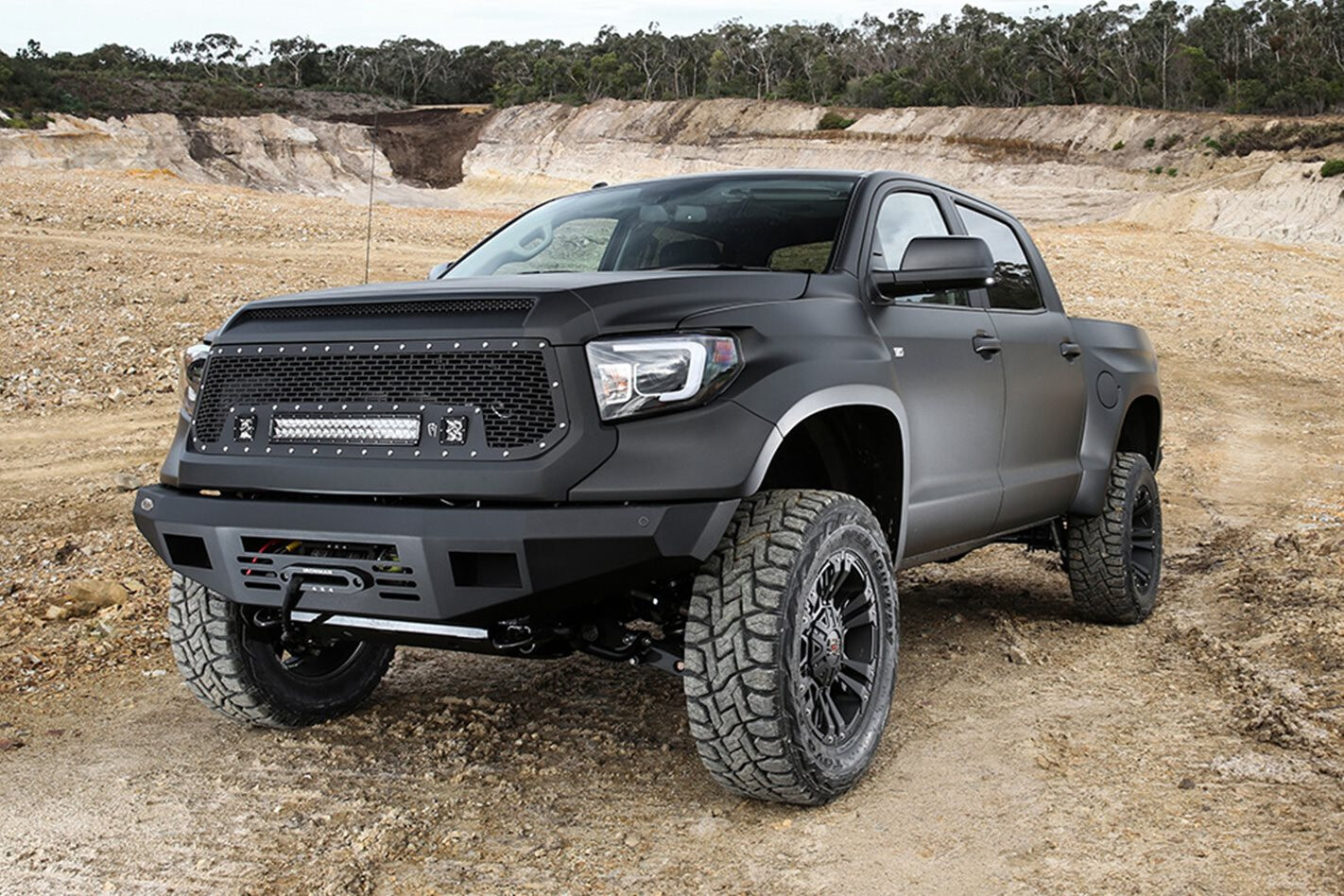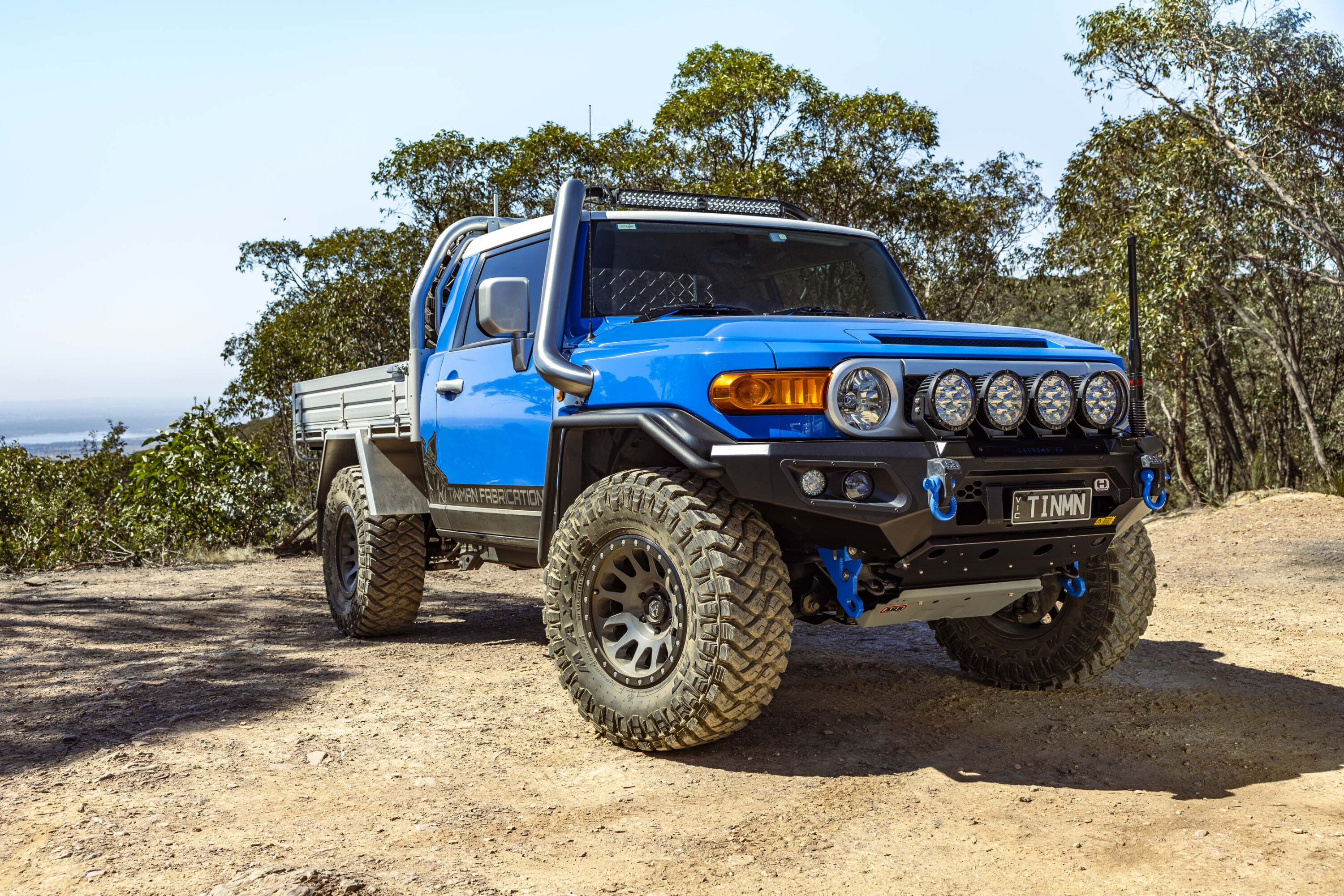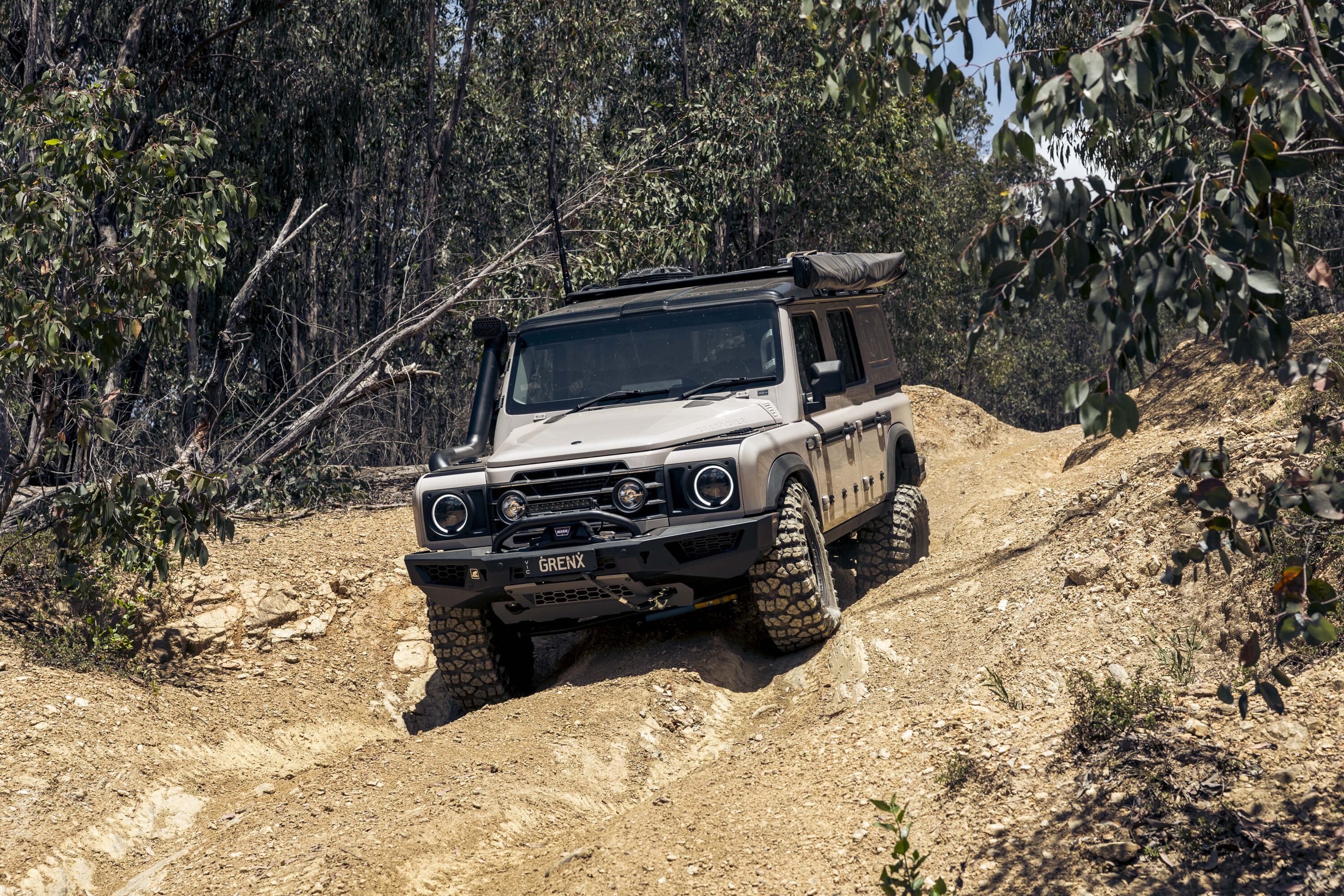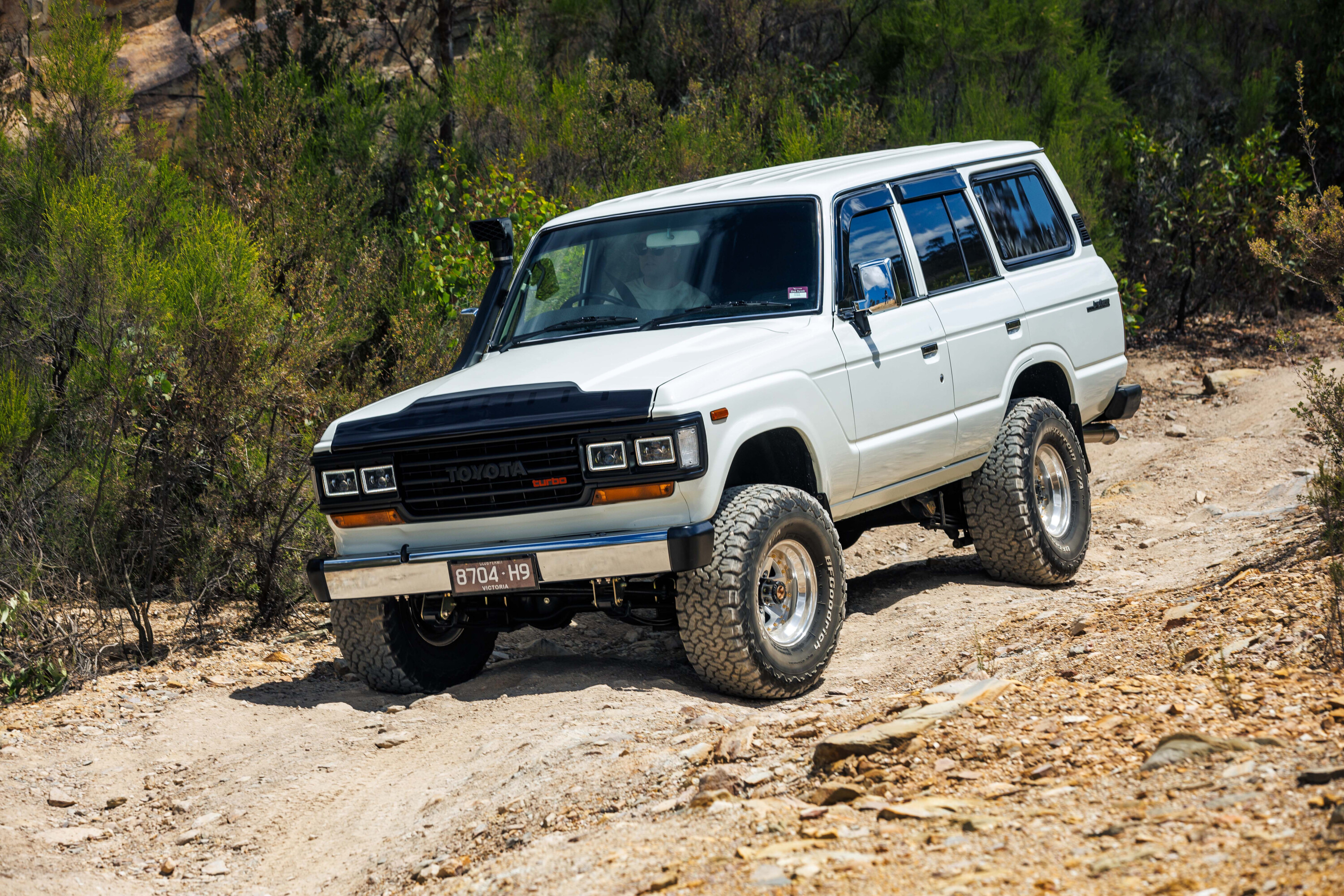BIGGER, faster, tougher and more capable – it’s not just a questionable sounding advertisement for adult products, but it’s the goal almost all of us apply to building the perfect 4×4.
Vote for the Toyota TRD Tundra to win the 2017 Custom 4×4 of the Year
We want them more capable to get us farther down the track; we want them faster to make the long stretches of tracks go by easier; we want them bigger for more storage space and easier towing; we want them tougher to handle the harsh conditions of the outback without crumbling to bits; and we want them more capable to get us off the beaten track and away from the hustle and bustle.
But while we’re here slaving away trying to make something it’s not, on the other side of the world a bunch of clever Yanks are screwing together the perfect 4×4. Well… almost.
The beast you’re looking at is a special one-off project some good friends of ours at American Vehicle Specialists down in Victoria have painstakingly pieced together. For those in the know, they’re the go-to guys if you want the keys to your very own right-hook Toyota Tundra, the biggest, baddest ute Toyota makes. However, that wasn’t enough for one customer.
Think of the Tundra a little like a wildly modified ute-chopped LC200 with a stonking 5.7L V8 petrol under the bonnet and you’re on the right path. At 5814mm long it’s a whopping 824mm longer than a normal LC200 and closer to the stretched versions that are becoming more and more popular.
The 284kW big petrol engine punches out 22 per cent more power than the Cruiser’s 4.7L V8, and it has 100Nm on top again with 543Nm from 3600rpm. Plus, it’ll tow 4000kg without breaking a sweat.
Now let’s get one thing clear right from the get-go: the Tundra in standard form is no ugly duckling and packs a hell of a punch, but they don’t come looking like this off the showroom floor. It’s sporting an additional 230mm of width across the shoulders thanks to a full set of replacement ’guards from FiberwerX.
If you haven’t heard of them before they’re one of the biggest names in lightweight fibreglass panels for everything from street-legal pre-runners to full-blown Baja-spec Trophy Trucks. The replacement front fenders and new bed sides were installed at American Vehicle Specialists, but the final paintwork was outsourced to Rob at RK Restorations.
It might look like Rob forgot the clear coat, but, after again getting the paint looking brand-new, a full matte black wrap was laid over the top by Exotic Graphics to protect it from pinstripes and wayward drool. The new wheel arches aren’t just there to look pretty, either.
They open up the somewhat small stock offerings, allowing the Tundra to swallow the 35-inch Toyo Open Country mud terrains. The wheel package is just as extreme: XD Monster 20×9 alloys up front with offset 20×10 units in the rear.
Now there’s no point installing desert race-spec fenders if you’re not planning on hucking your 4×4 off every erosion mound and wayward Prius in your path. To let the new owner do his best, AVS ditched the stock suspension and got to work.
Up front, a long-travel arrangement replaces almost every factory component and kicks the wheel track out by a huge 120mm overall. The heart of the system is Pro Comp’s 2.75-inch body internal bypass coilover, which gives ride height a vertical bump by four inches.
The internal bypass system allows the shock to be tuned for different dampening levels, depending on where it is in the suspension cycle. They’re also sporting external reservoirs for increased oil capacity and improving resistance to shock fade.
From here, replacement cast alloy upper and lower control arms push the wheel farther out, with beefier ball-joints allowing a huge 14 inches of wheel travel in the front end alone. Extended CV shafts and tie-rod extensions also went into the front arrangement.
The Pro Comp kit kicks the rear up another four inches with additional leaf springs, longer shackles and a matching 2.5-inch shock – for a total of 12 inches of rear suspension travel.
If the story ended here you’d be forgiven for thinking it was your typical all-show and no-go kind of build, but that’s far from the truth. Under the bonnet, nestled into the mechanical bosom of V8 fury, is a huge Magnuson Supercharger from local distributors VCM Performance.
The cast alloy offering sports Eaton internals and force-feeds 8psi of compressed air down the bent-eight’s snout, pushing power figures far beyond any showroom 4×4 you’ll find in Australia. Horsepower itself is bumped up by a mind-melting 44 per cent to 410kW, with torque skyrocketing 37 per cent to 745Nm. A sneaky TRD twin stainless steel exhaust system also got the nod to give the Tundra the bark to match its bite.
Now you can’t go building one of the meanest trucks on the track then go hide its pretty face behind a whole bunch of pressed steel. To add some vital protection to the Tundra’s nose without making it look like every other 4×4 on the tracks, the guys ordered a whole heap of bar work from US manufacturer Rock Slide Engineering.
The heavy-duty plate aluminium offering houses a locally sourced Ironman 4×4 12,000lb winch with provisions for LED lighting in the centre and at either wing. Not that the Tundra would ever need it, mind you. The front end copped an overhaul of the Lumen variety, with a replacement Rigid Industries grille taking pole position.
It sports a 20-inch Rigid Industries E-Series bar in the centre and D-Series LEDs in either wing, as well as replacement headlights from Spyder Auto. The rear end copped similar treatment, with Spyder Auto tail-lights finding a home above a matching Rock Slide rear bar.
Now, I know what you’re saying, “it’s over the top, it’s still too big, I can’t afford one so it must be bad.” Hell yeah it is, but that’s kind of the point. Sure, the length will see it struggle a little in tight tracks and winding switchbacks, but it’s going to perform a hell of a lot better than a Suzuki Vitara towing a camper trailer.
If you’re doing serious touring and aiming to pound out hour after hour of corrugations or beach driving, you’d be hard-pressed to find a more suitable vehicle. It’s everything you’d want in a serious 4×4; we just can’t help but wonder how it’d look with a swag in the back and the keys in our hands.
Right Hook
WHENEVER the topic of American pick-ups gets brought up, the first complaint is how much more expensive they are here compared to new prices in the States. To get the low-down on how the numbers add up, we spoke to Ryan Waterman from American Vehicle Specialists to find out what goes into getting a LHD 4×4 right-hook.
“After getting the Tundra over here, we completely gut the interior and engine bay,” he told us. “We attempt to mirror the stock set-up so it’s an OEM level finish.” This involves swapping out the steering rack for an OEM-style offering with the input on the right-hand side.
The firewall and dash frame are both extensively worked or completely replaced to get the pedal box, steering wheel and brake booster all on the right-hand side of the truck. Inside, the dash is reverse-engineered with a brand-new mirror-image unit going in its place.
Once the heavy lifting is done, there are loads of details to get that factory-fresh feeling, like new switches, seat electronics and plenty of small components and dash pieces. Once it’s all buttoned up, AVS jumps through a million bureaucratic hoops before registering it as a brand-new vehicle complete with an Australian VIN.





